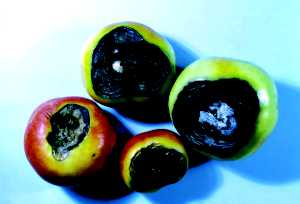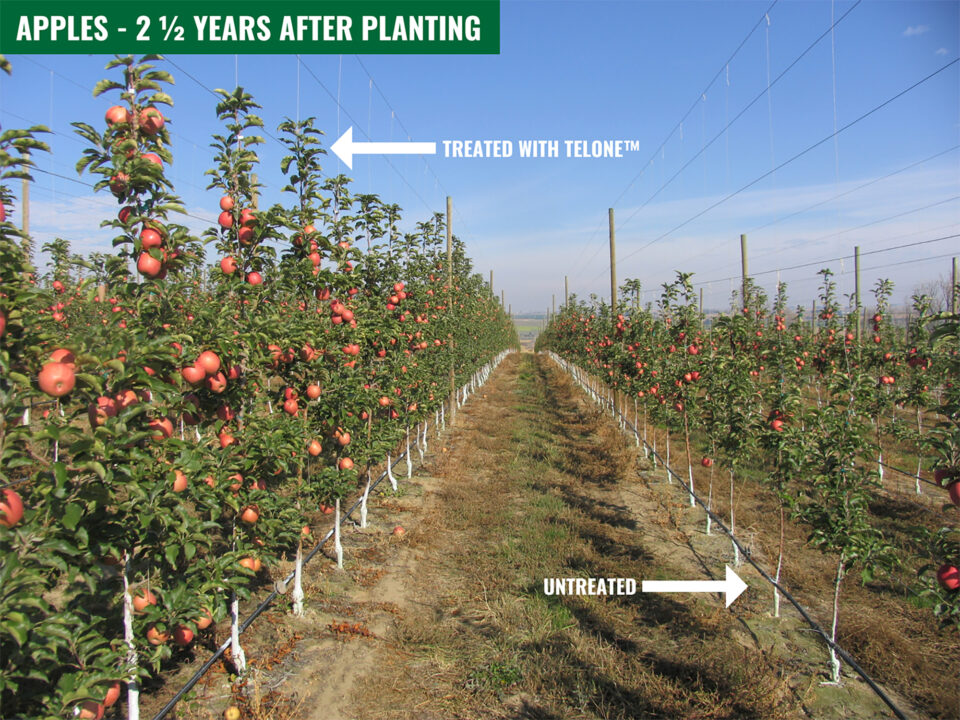Learn To Avoid These Six Tomato Disorders
Properly identifying physiological disorders in tomatoes can save time, money, and resources. North Carolina State University vegetable production specialist Chris Gunter provides the following tips on how to handle six major disorders.
1) Blossom End Rot: This disorder is often seen early on and is characterized by a premature reddening, and a leathery spot that develops and later dries out. It is not a disease, mentions Gunter, but a localized calcium deficiency. “This is caused by an interruption in the supply of water and calcium, which moves in the water stream of the plant,” he explains. “When that supply is stopped, the deficiency and thus symptoms can occur. The leathery spot can dry out and may sometimes turn fuzzy, which is not a disease, but a secondary infection.” It’s critical to get the plant to a pathologist for identification, Gunter adds.
Causes of blossom end rot include a local calcium deficiency, fluctuations in soil moisture, drought, root uptake, and excessive fertilizer.

Blossom End Rot on tomatoes. Photo credit: David B. Langston, University of Georgia, Bugwood.org.
2) Sun Scald: This problem occurs when tomato fruit are exposed to direct heat from the sun. This intense heat damages the fruit cells and can be lethal to the fruit tissue. To prevent scalding, Gunter advises maintaining proper foliage of the plant, which in turn will provide shade.
To reduce the chances of sun scald, make sure plants maintain healthy foliage to provide shade to developing fruit. Also, remove scalded fruit to redistribute the nutrients to undamaged plants, he adds.
3) Zippering: Zippering is when an anther sticks to a developing ovary, and causes damage as the fertilized ovary expands into tomato fruit. It usually starts when the fruit is green, and is later characterized by what literally appears to be a long zipper on the fruit that extends from the tip of the scar to the blossom end of the fruit. It sometimes gets so severe that a hole develops, leaving the fruit open to a variety of pathogens, adds Gunter. The only control is to choose varieties not prone to the disorder.
4) Fruit Cracking: Cracking of the fruit can either be radial or concentric. Radial cracks form near the stem and may appear all the way from the bottom to the tip of the fruit. Concentric cracks usually form on the shoulder of the fruit appearing as rings of brown scar tissue. Tomatoes are most vulnerable to cracking during the fruit expansion stage, and the problem could be a result of adverse environmental conditions, leading to slow growth and then returning to normal growth.
Some ways to prevent cracking include maintaining proper soil moisture and water supply during periods of hot, dry weather, says Gunter.
5) Graywall, or Blotchy Ripening: Externally, graywall is characterized by a lack of pigment in the developing fruit. Internally, it is characterized by dark necrotic areas that are usually in the vascular tissue of the outer walls. It typically develops when the fruit is still green, prior to harvesting, but it can also develop later.
Graywall can be caused by environmental conditions, which include prolonged cloudiness, low light, high humidity, and low temperatures. It can also be caused by high soil moisture, soil compaction, and excessive fertilization. Gunter suggests maintaining the crop with as few growth disruptions as possible because rapid changes during the production cycle cause the disorder.

“Catface” describes a tomato that has suffered major deformities. The exact cause is unknown, but temperatures below 60° F three weeks before bloom are considered a possible cause. Photo credit: Paul Bachi, University of Kentucky Research and Education Center, Bugwood.org.
6) Catface: “Catface” is a general term used to describe a tomato fruit that has suffered major deformities. There is typically no open wound and it usually appears on the blossom end as a large scar-like indentation. The exact cause of catfacing is unknown, but Gunter mentions low temperatures (below 60°F) three weeks before bloom as a possible contributor.
In the end, if only some fruits are damaged by the disorders mentioned here, Gunter reiterates that it is critical to get rid of damaged fruit in order to push the nutrients back into the more marketable ones as a way to cut losses.









